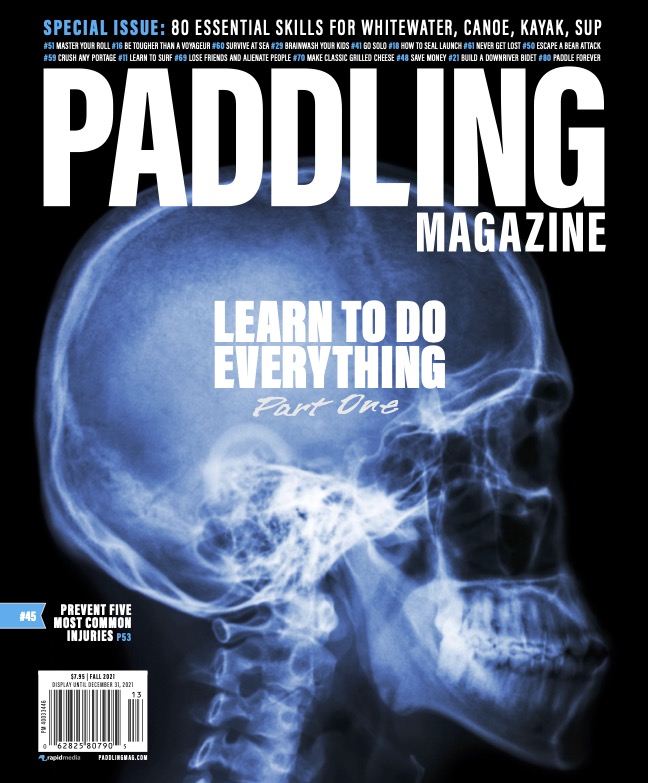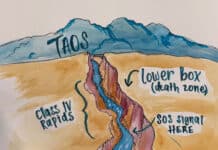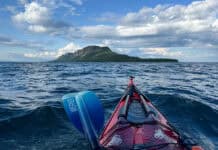It’s easy for freestyle paddlers to get stuck in a hole of mediocrity, flailing awkwardly in a recirculating repertoire of chronic bad habits. Don’t let yourself flounder on freestyle’s skid row of delayed development. Our experts point out freestyle’s six most common bad habits, misconceptions and mistakes and tell you how to avoid them.
6 Freestyle Mistakes to Avoid
1 Tilting with your head, not your hips
“If you are rigid in your boat, you’ll have to tilt your head over the side to engage its edges,” says Dave Tiedje, an instructor with the Ottawa Kayak School. If your body tilts with your boat you’ll need to use your paddle for braces rather than for maneuvering.
The secret, says Tiedje, is separating your upper and lower body. When putting your boat on edge, keep your upper body perpendicular to the water and overtop of your boat by bending at the hips. This keeps you balanced when the boat’s edge is engaged and lets you use your paddle for effective strokes.
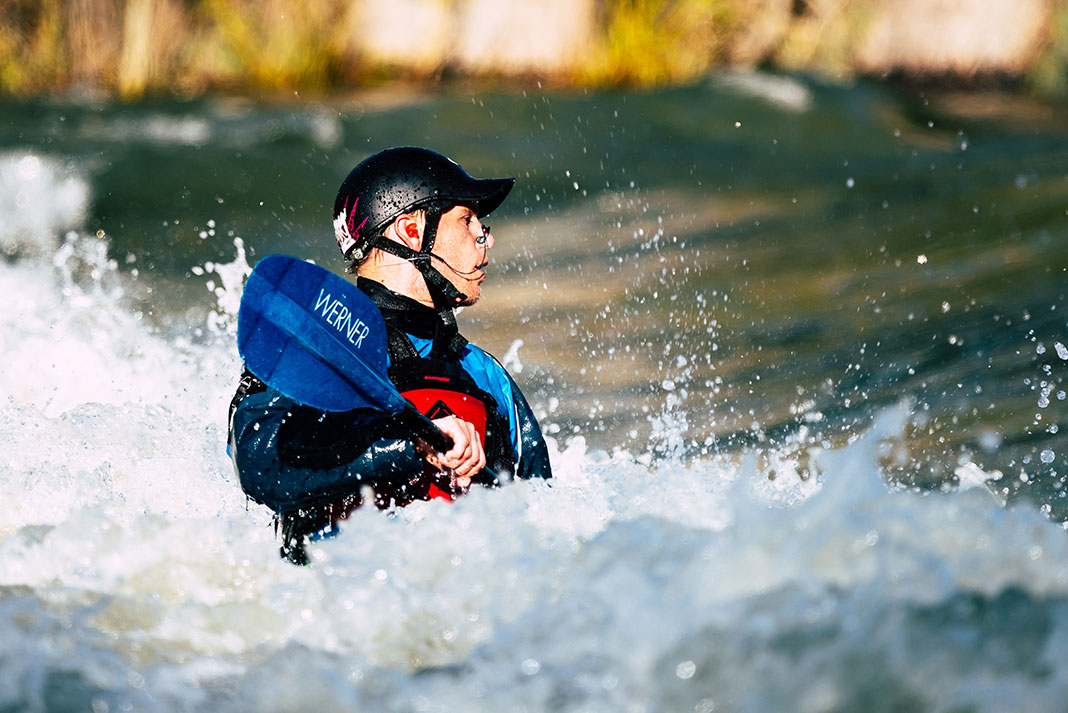
2 Wrong boat blues
Too many people end up paddling a freestyle boat that’s too small or too big for them. Matt Hamilton, an instructor and three-time member of the Canadian national freestyle team says, “If your kayak is too small, it will ride too low in the water and won’t come up on a plane as easily while surfing.”
The result: you’ll feel like you’re trying to spin and bounce a bathtub. And, says Hamilton, the edges that are so good for carving in a properly sized boat will always be in the water making for a grabby ride.
Boats that are too big have their own set of problems. First off, you’ll be swimming in the cockpit and won’t have the boat control to do advanced or even beginner freestyle moves. Secondly, you’ll never physically be able to cartwheel a beastly kayak that has too much volume for you in the ends.
When choosing a freestyle boat, Hamilton suggests beginning with the manufacturers’ suggested weight ranges and then experimenting on the river.
3 Listening to your buddies
“You can only learn so much from your buddies,” says Anna Levesque, creator of the Girls at Play instructional tour and video series for women. While your paddling buddy, boyfriend or husband may be your best friend off the river, they seldom give you as much attention when they’re queued up for surf a wave.
Instructors are paid to sit in eddies and study and critique your technique. And a good instructor will offer tips to help with the finer details—like how to balance your weight in the boat and where to look—that make a big difference and take time to teach, says Levesque. Take a course at the beginning of the paddling season and remember to practice what you learned.
4 Backseat driving
“The classic La-Z-Boy pose is a sign of defensive paddling,” says Chad Hitchins, the general manager of Liquid Skills. You can’t paddle powerfully if you’re not sitting tall and engaging your abdominal muscles. And, says Hitchens, your kayak wasn’t designed to ride ass-heavy.
Sitting in the backseat fails to effectively engage the kayak’s edges beneath your seat, so you’ll be slip-slidin’ away on green waves. “Sit-ups or crunches will strengthen your abdominal muscles,” suggests Hitchens. “You’ll be less reliant on your backband and more likely to sit properly with your head above your pelvis.”
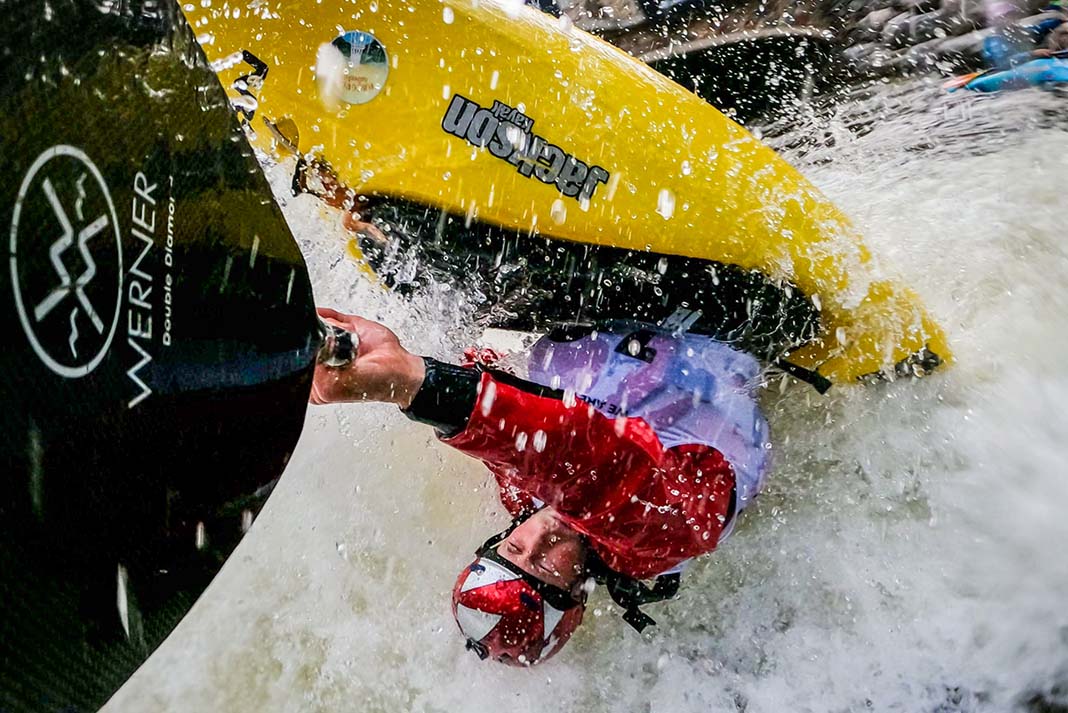
5 Forgetting the fundamentals
“A surprising number of paddlers can’t perform a proper forward stroke,” says Mariann Saether, an instructor at Sjoa Kajakksenter in Norway. Getting on a wave or learning playboating moves require precise, powerful forward strokes.
“Many paddlers neglect the large core muscles of the body and instead rely only on their arms,” says Saether. To ensure you’re using your stronger torso muscles, she suggests visualizing yourself rotating your torso as you reach for your stroke and unwinding it as you pull your paddle blade through the water to your hips.
6 Staring at the bow
“If you’re having a hard time staying in the sweet spot while trying to spin or cartwheel, you’re probably staring at your bow rather than into the hole,” says Patricia Fraser, a Paddler Co-op instructor and former dance instructor.
It’s hard to anchor yourself on the most playable part of the feature without a visual point of reference. “When a dancer or figure skater jumps and spins she keeps an eye on her landing as long as possible and then snaps her head around to spot her landing,” says Fraser. The same is true for spinning a kayak—the landing is the sweet spot of the wave or hole.
Instead of staring at the bow of your kayak or off into space look upstream where you want to be until the boat has spun so far around you can no longer look upstream, then quickly rotate your head over your other shoulder to spot your landing. Your body and boat will follow your head around.
This article first appeared in the Early Summer 2006 issue or Rapid Magazine and in Paddling Magazine Issue 65. Subscribe to Paddling Magazine’s print and digital editions here, or download the Paddling Magazine app and browse the digital archives here.
And one more thing—don’t call it rodeo. | Feature photo: Nick Troutman


